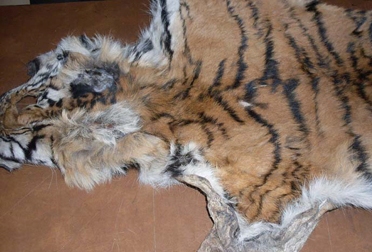On the occasion of World Environment Day, celebrated on 5th June, the United Nations Office on Drugs and Crime (UNODC) presents a story on wildlife crime in India.
India: Our endangered wildlife - a cause for concern
India is a bio-diverse country, with nearly 6.5% of the world's known wildlife species. Approximately, 7.6% of the world's mammals and 12.6% of the world's birds are found in India. The illicit demand, globally, for wildlife and its products has seen the rise of wildlife crime across the subcontinent.
As defined by the International Consortium on Combating Wildlife Crime (ICCWC), wildlife crime refers to acts committed contrary to national laws and regulations intended to protect natural resources and to administer their management and use. This includes the illicit exploitation of natural resources, such as poaching of animals and unauthorized logging of trees. It may also include subsequent acts, such as the processing of fauna and flora into products, their transportation, sale and possession.

The UNODC is mandated to support its member states fight wildlife crime. The United Nations Convention against Transnational Organized Crime (UNTOC) is an important instrument providing the necessary legal framework for international cooperation in combating wildlife crime.
In India, wildlife crime is a pervasive problem damaging ecosystems, impacting food security and affecting livelihoods of rural communities. In many cases, cross-border smuggling of live animals and plants can result in the spread of disease through carrier animals and plants.
Major wildlife crime in India includes poaching of tigers, rhinos and the sale of Star tortoises. Tigers are an endangered species, poached for their skin and bones to cater to an illegal market. Their body parts are used in Asian medicines and tiger claws are used in jewellery. Tiger whiskers are considered a dreadful poison in Malaysia and a powerful aphrodisiac in Indonesia.
Ancient trade routes for salt, spices and wool are being used to smuggle tiger skins and bones. These illegal goods are sent to buyers based largely in northern India and are then smuggled out of the country through couriers. The main route is via Nepal, with whom India has a porous border, or directly across the border to China. More recently, routes through Myanmar have also been used.
Apart from tigers, India is also witnessing a rise in wildlife crime against Rhinoceros. Driven by a soaring demand for their horn, hundreds of rhinos are being killed, illegally. According to a report 1 by TRAFFIC and the International Union for the Conservation of Nature (IUCN), sophisticated poachers are using veterinary drugs, poison, cross bows and high calibre weapons to kill rhinos.
The Indian rhino could once be found from Pakistan, all the way through India, Nepal, Bangladesh, Bhutan and Myanmar. However, the current population of this species is dwindling and today only about 2500 survive in India and Nepal.

It is not only large mammals, but also smaller species that are under threat. Star tortoises from South India are illegally traded in huge numbers. Due to their popularity in Feng Shui, they are kept as pets, believed to bring prosperity and can cost as much as $500 in the illegal market. Many protected marine species such as sea cucumbers, molluscs, sea horses and coral are also illegally harvested in Indian waters for export.
In India, the Wildlife (Protection) Act, 1972 is a strong legislation that covers wildlife crime. However, the implementation and enforcement needs to be strengthened in order to curb this transnational crime.
References:
The UNODC would like to acknowledge the Wildlife Protection Society of India for their support.